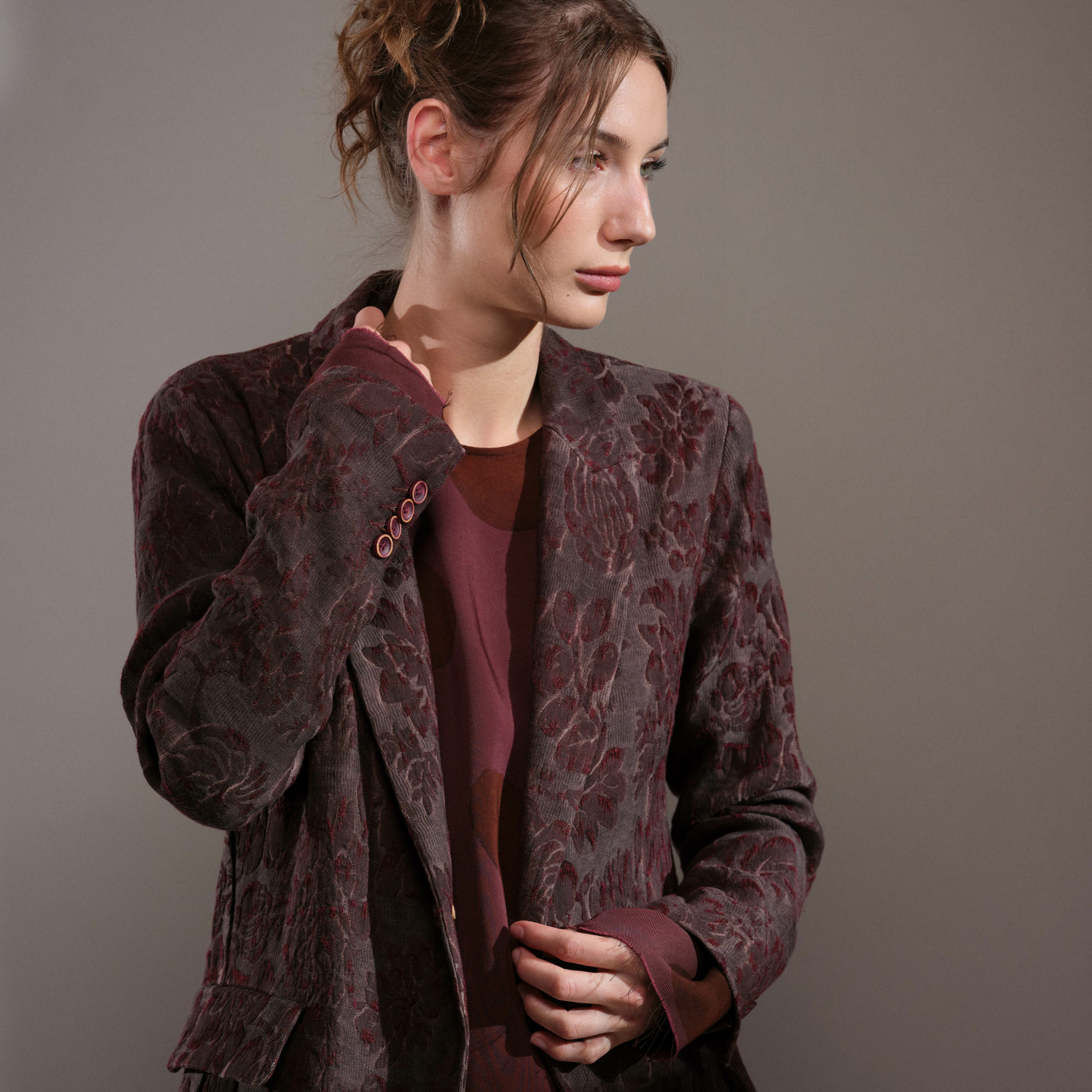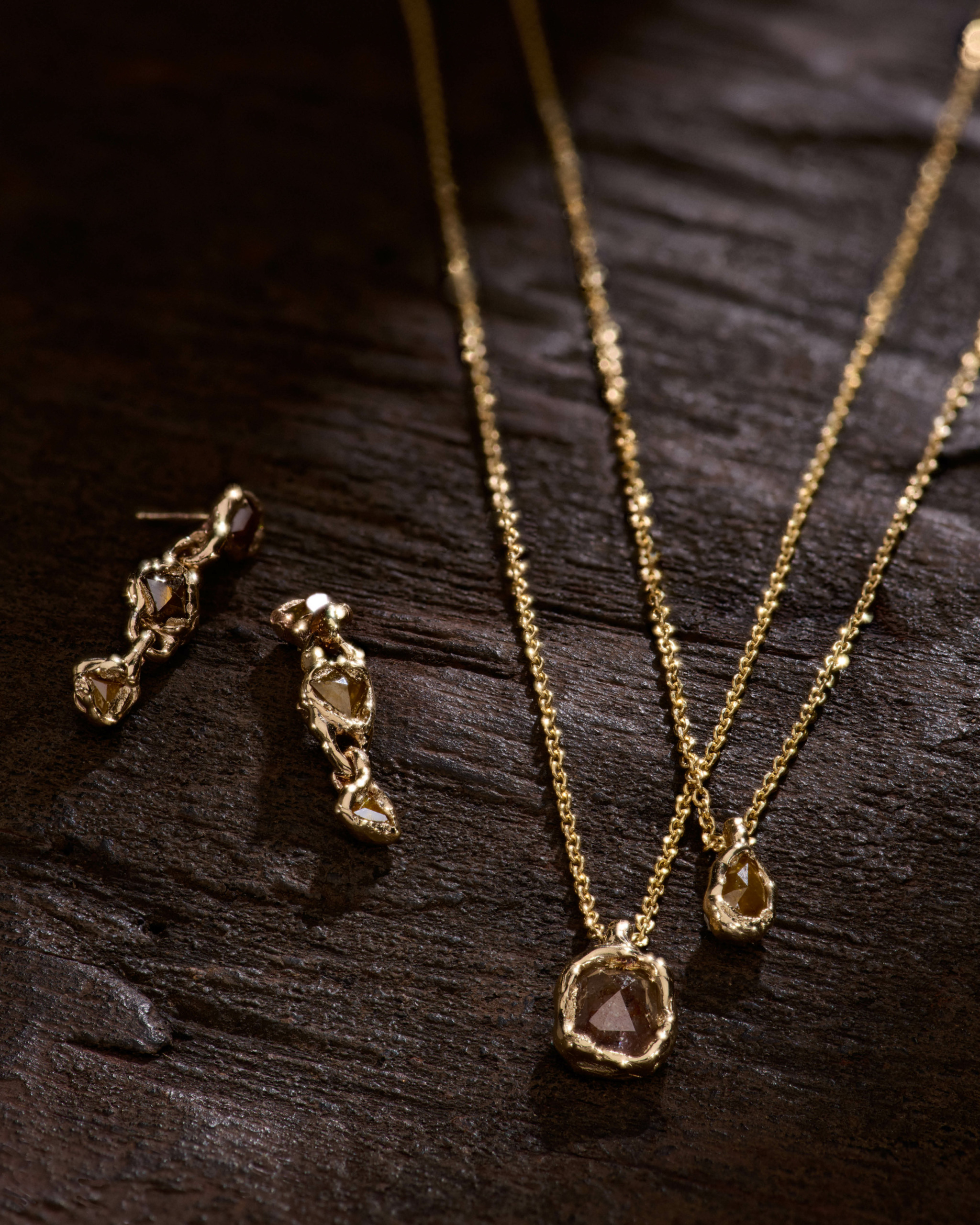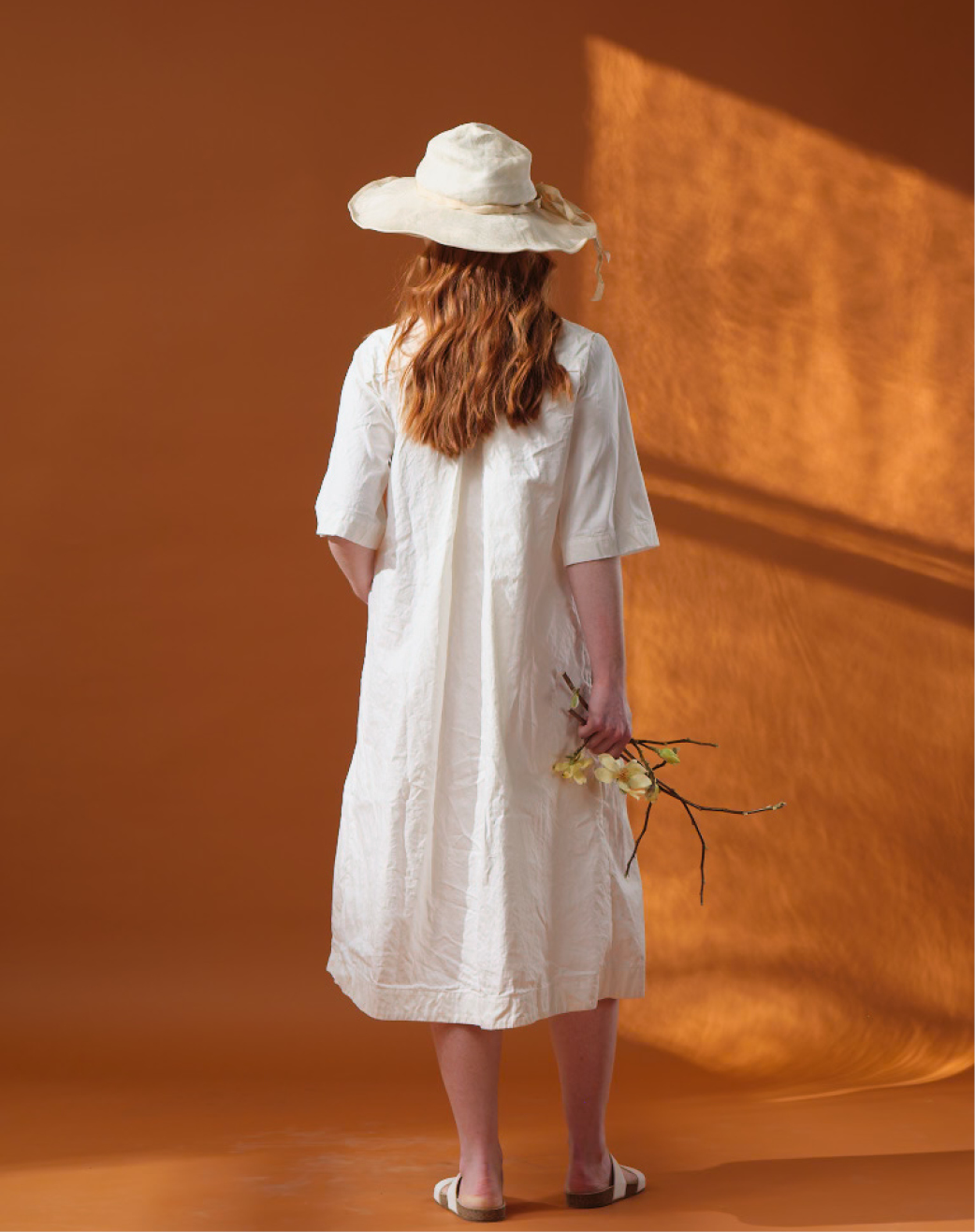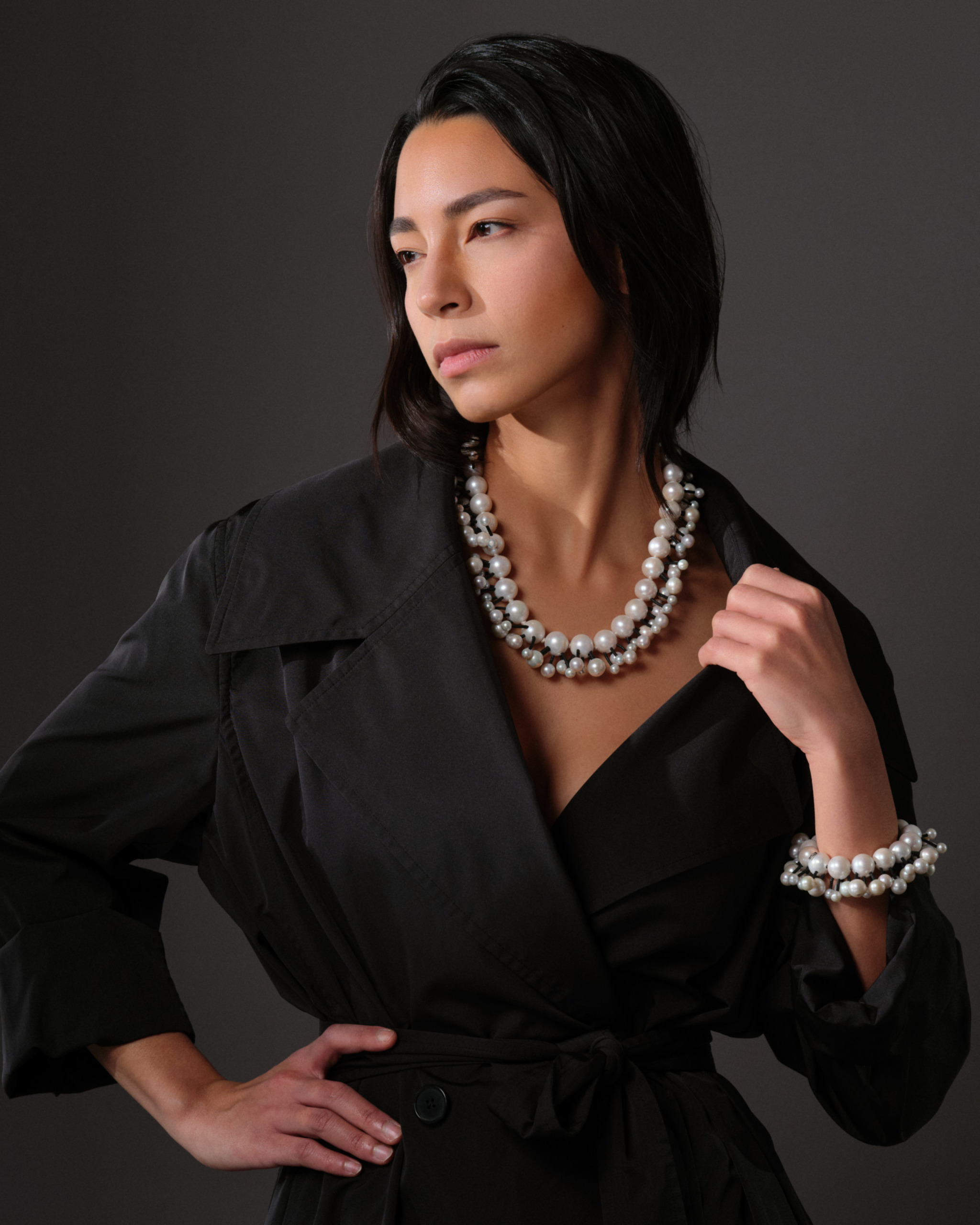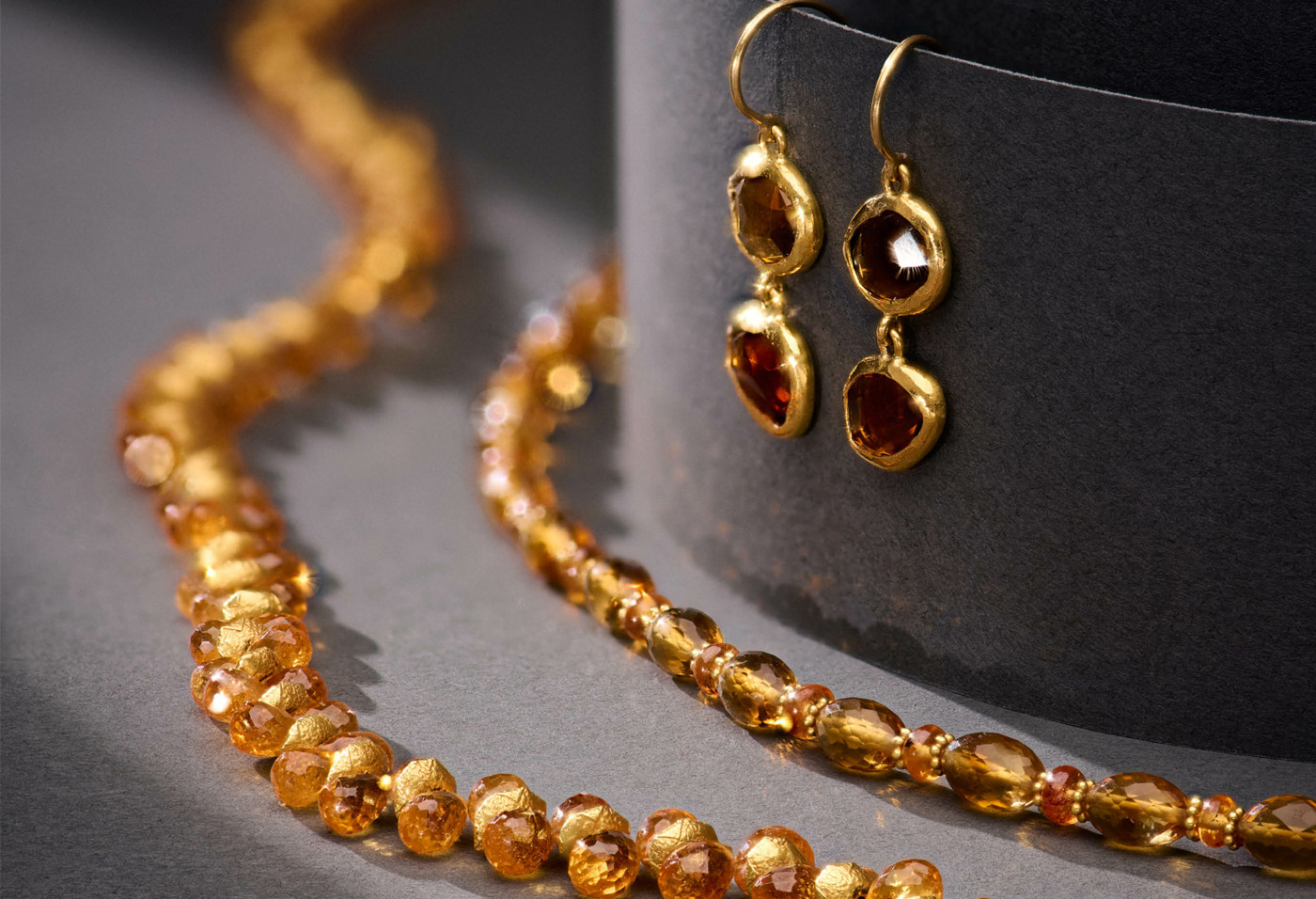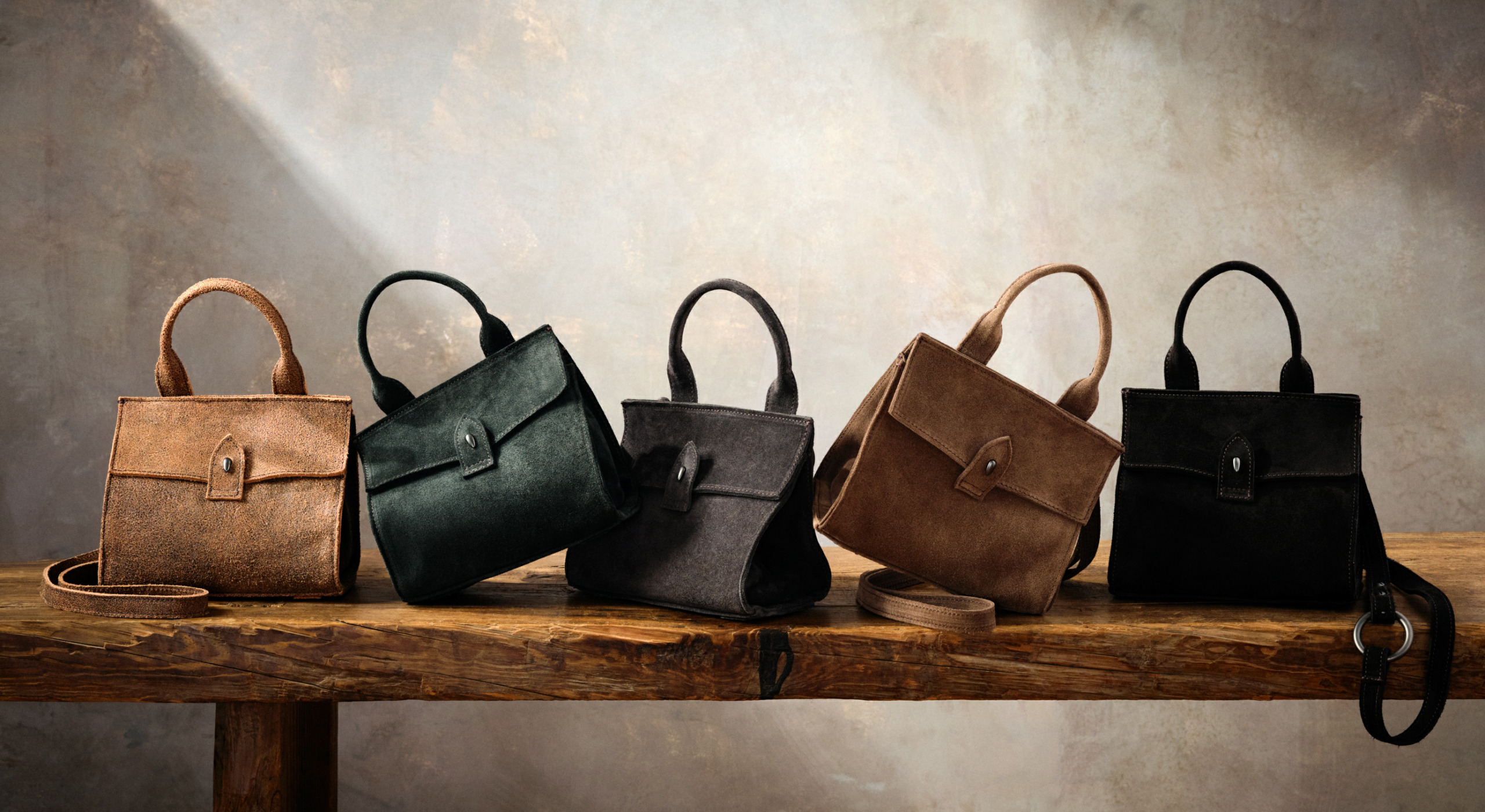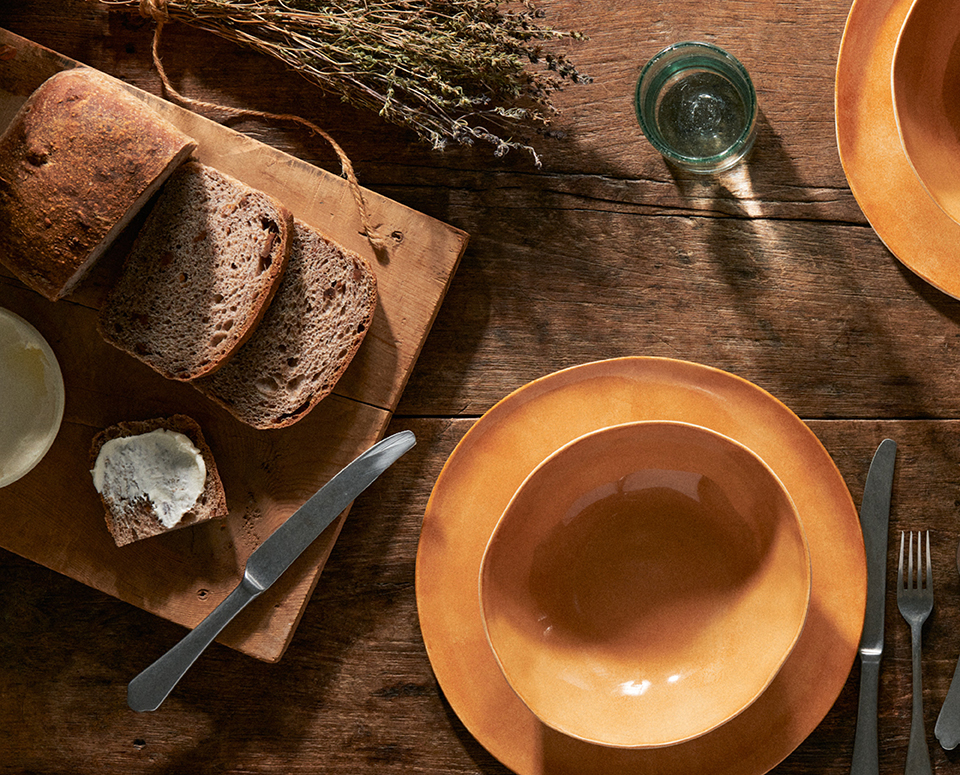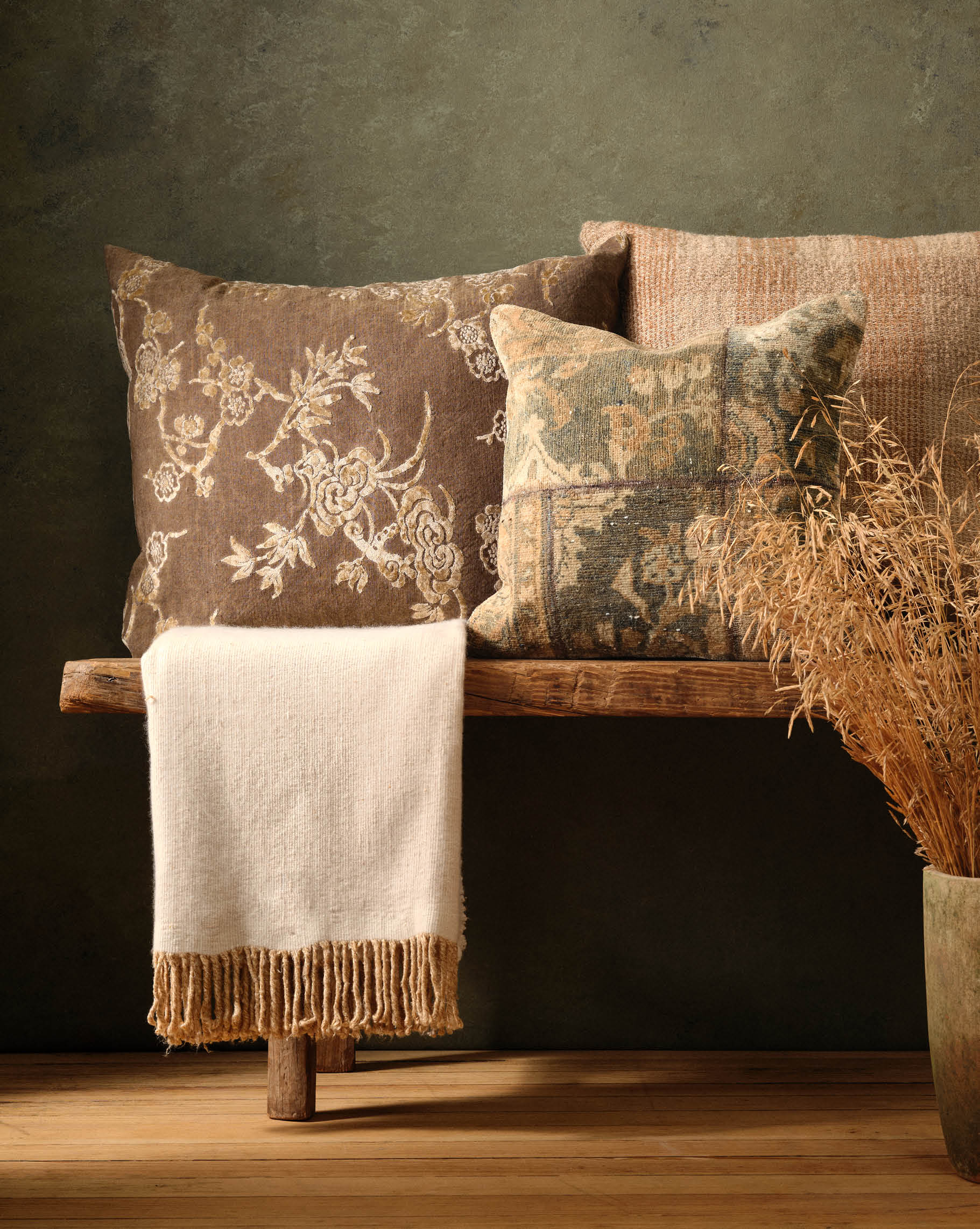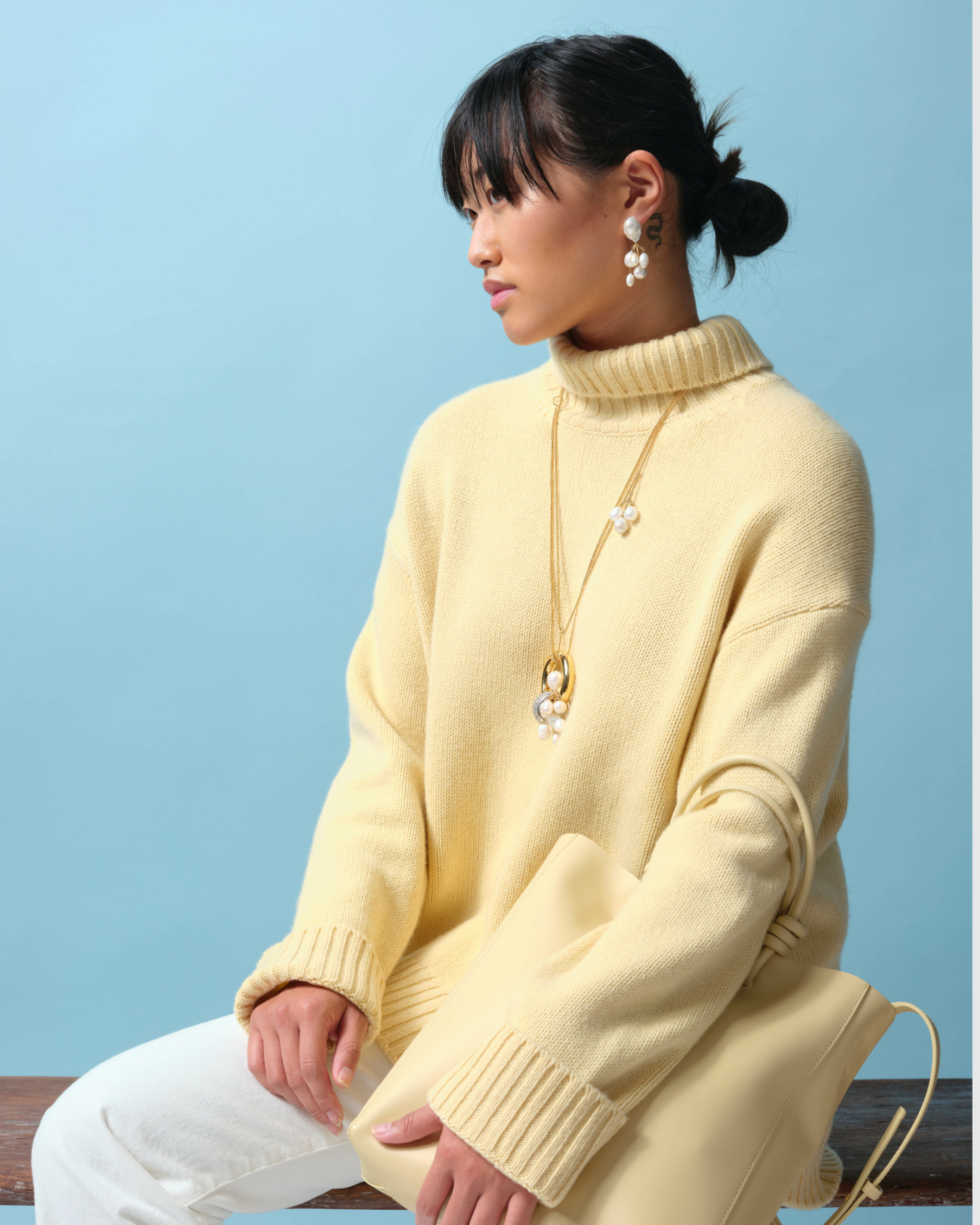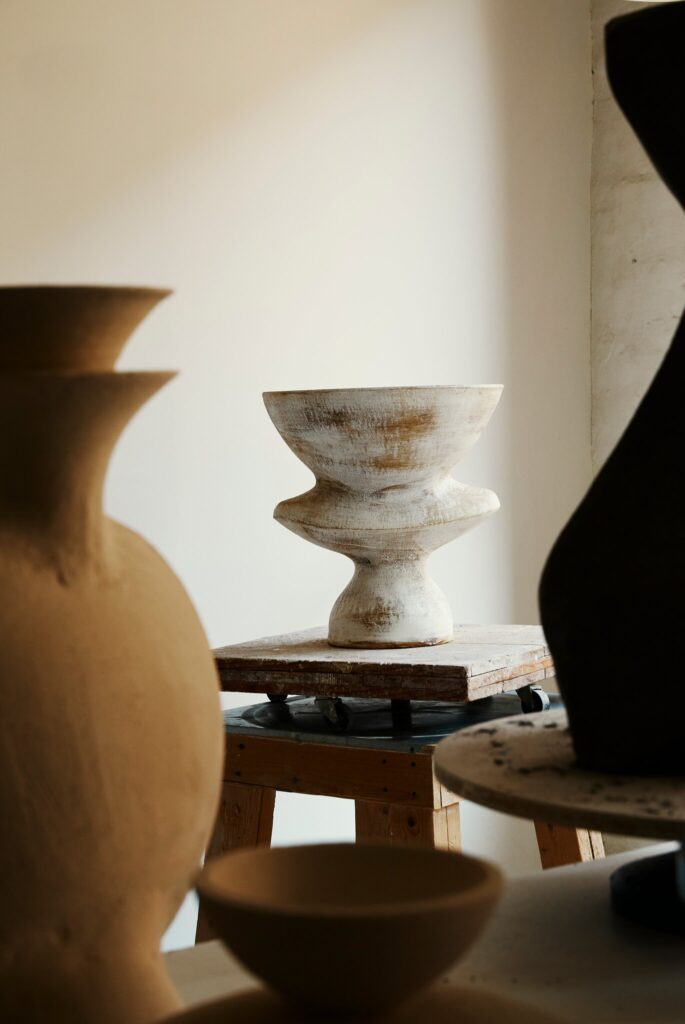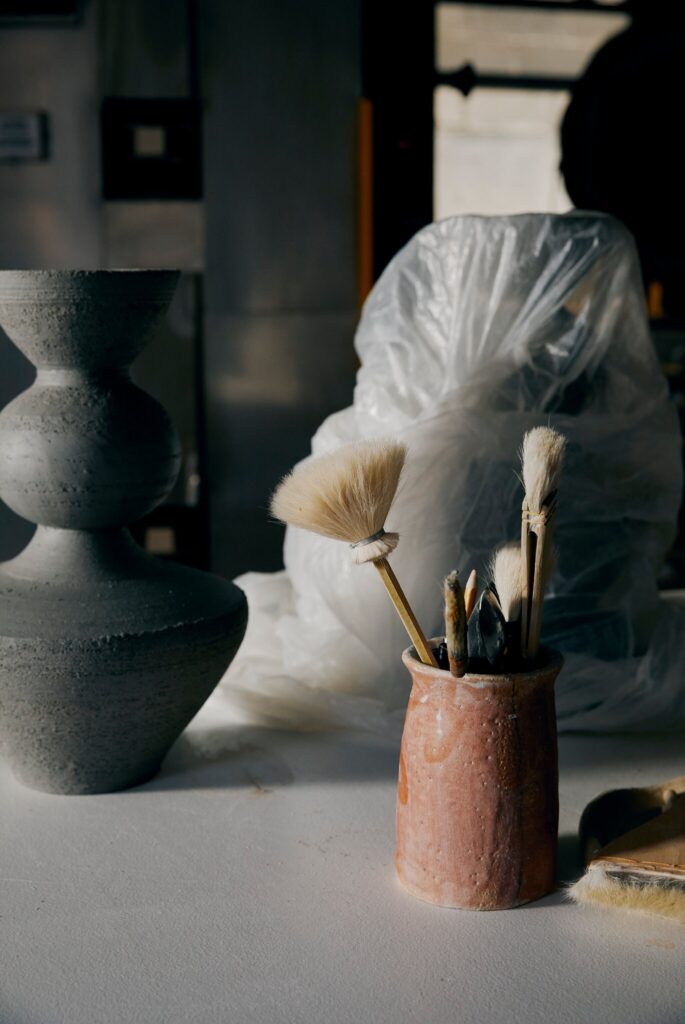Inside a former bottling factory in Brooklyn, the artist Danny Kaplan creates hand-thrown lamps and objects that feel at once ancient and modern.
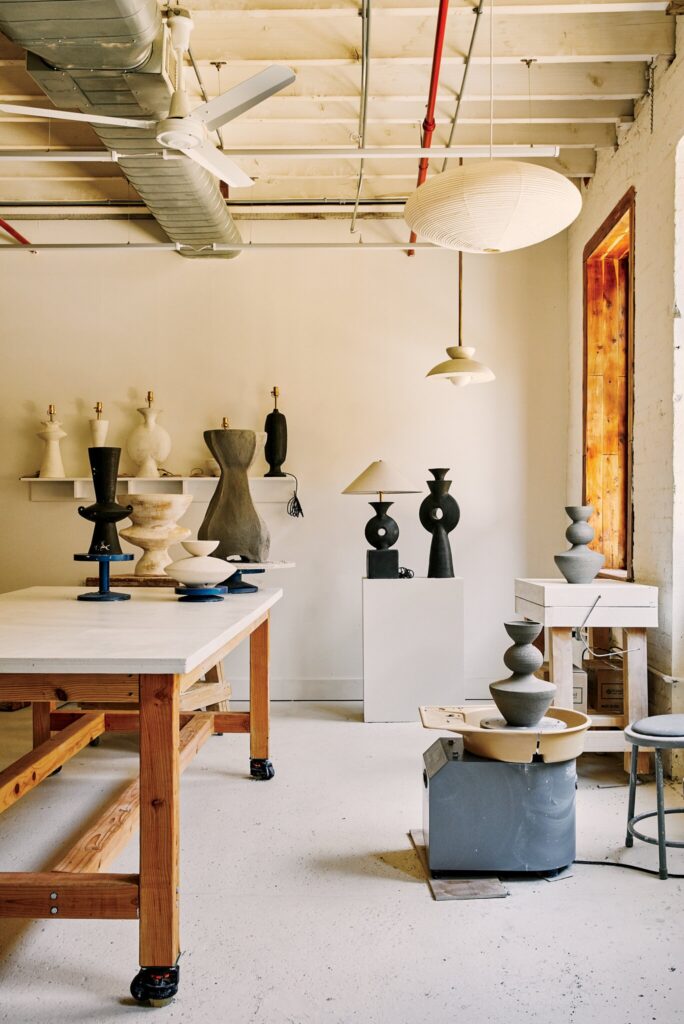
By Alice Newell-Hanson of the New York Times Style Magazine
Feb. 10, 2021
“With clay, you are always trying to achieve perfection,” says the ceramist Danny Kaplan, seated in his 700-square-foot studio, a serene space with 12-foot-high wood-beamed ceilings inside a building that was once a bottling factory in the Bushwick neighborhood of Brooklyn. Indeed, behind him, packed closely together on broad steel-frame shelves, are dozens of only slightly different versions of the prehistoric-looking table lamps he has been meticulously sculpting over the past five years, as if searching for an ever-elusive archetype.
Kaplan, 37, who was born in New York but raised in the South of France, came to clay late in life. In 2015, he enrolled, on a whim, in an eight-week course at La Mano Pottery studio in Manhattan. Up until that point, he’d been working as a prop stylist in New York, to which he returned in 2001. But just one year after enrolling in that first class, he launched his own ceramic-lamp and tableware business. Pottery alleviated what Kaplan sees as “the pressure of a more subjective art form like painting.” Creating an object that fulfilled its given purpose was a more straightforward achievement: “If I could make a bowl that functioned as a bowl, then I’d succeeded.” His lamps, which can be custom-ordered and come topped with a white or undyed linen shade, look like primitive art, midcentury abstraction or humble handicraft, depending on their surroundings — a quality that earned the attention of buyers at ABC Carpet & Home in New York and Lawson-Fenning in Los Angeles, where his work is now sold.
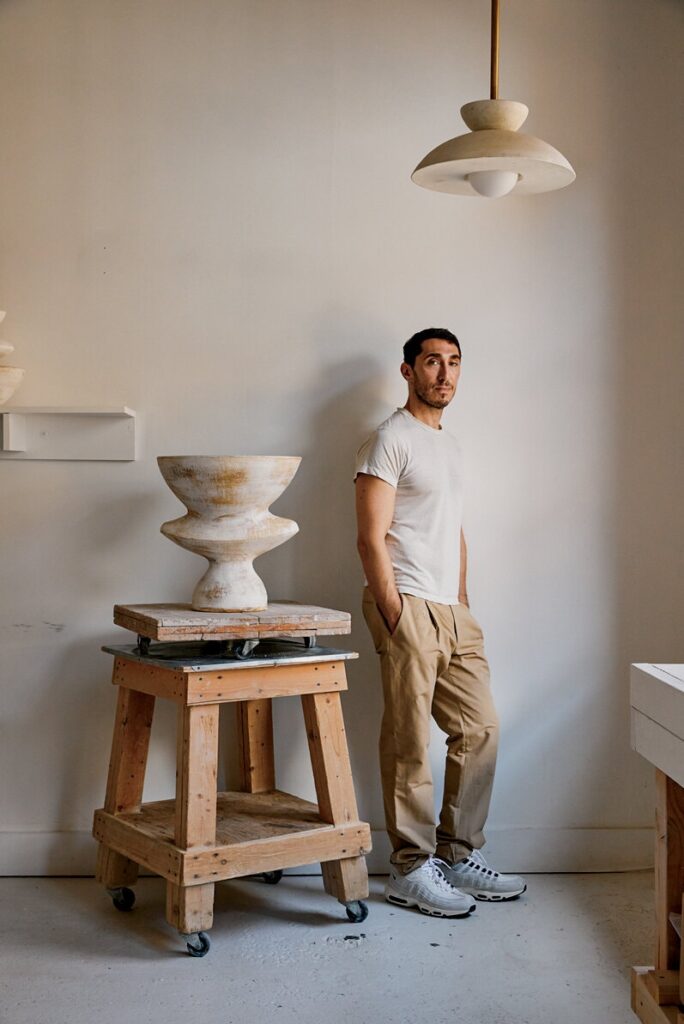
In addition to lamps, Kaplan also makes long-necked vases with squat, urnlike bases, shallow-footed dishes and, most recently, furniture, including a stout side table made from stacked parabolic forms that evokes a bowl balanced on an oversize Ming dynasty porcelain pillow. Built partly on the wheel and partly by hand from sculpture clay, all of Kaplan’s creations return again and again to the same elemental forms — orbs, bowls, horns, half moons and convex, lentil-like rounds — and many have a smooth finish, produced by a layer of porcelain slip that is then fired in either a powdery bone white or a soft coal black glaze.
These root forms are the same building blocks, utilitarian and eternally satisfying, that potters have been making and remaking since the craft’s beginnings. “There really aren’t that many shapes,” Kaplan says. “I just use them in different ways.” And though his pottery is informed by his forebears — from the German Modernist ceramist Hans Coper to the ancient Greek and Mayan potters — his work is also subject to the irregular, irreplicable contours of his own hands and history. In fact, it is his childhood home in Aix-en-Provence, an apartment in a shuttered 18th-century building appointed in the minimal style of the 1930s French designer Jean-Michel Frank, that may be the thing that most shaped Kaplan’s aesthetic. “I’ve always tried to recreate it in my pieces,” he says. “Having that sparsity is fundamental.”
Text and Images courtesy of the New York Times Style Magazine
